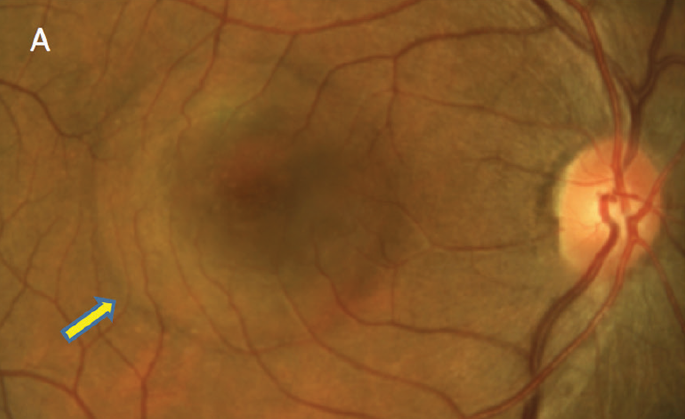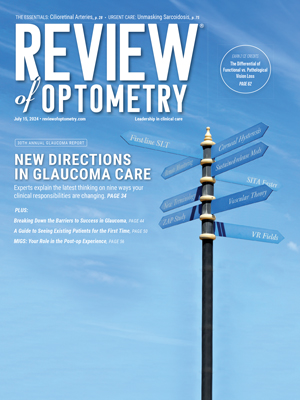 |
According to data in this study, patients with CSC have a higher rate of AMD development. Photo: Mohammad Rafieetary, OD, Jessica Haynes, OD, and Roya Attar, OD. Click image to enlarge. |
Central serous chorioretinopathy (CSC), part of the pachychoroid disease spectrum, has the potential to progress to aneurysmal type one neovascularization, a subtype of AMD. However, there was previously minimal information on the incidence of AMD in CSC patients, which is why researchers recently sought to close this gap.
This population-based study conducted in Korea included 11,492 patients in the CSC group and 22,984 in the non-CSC group. By reviewing a claims database, the team found that the risk of wet AMD was 4.86x higher in the CSC group than in unaffected patients. The CSC and non-CSC groups included 166 and 73 cases of exudative AMD, respectively.
The incidence of CSC was found to be 19.61 per 100,000 person-years (30.49 and 8.88 in men and women, respectively). This incidence was very low, which the authors noted could be due to differences in the definition of CSC, such as the use of OCT for diagnosis and exclusion criteria. Using data from an entire population rather than a population-based sample may also have been a factor, they added, but the prevalence by age group and male-to-female ratio were consistent with previous studies, one of which reported the incidence of exudative AMD in the general Korean population was much lower than the incidence in this study.
The rate of AMD development in CSC patients was 363.89 per 100,000 person-years. “Interestingly, the incidence of exudative AMD was 83.08 per 100,000 person-years in the non-CSC group, indicating that the overall incidence of AMD has increased over the last several years,” the authors explained. “We speculate that these results are potentially attributable to increased diagnosis/detection via improved healthcare access, as well as possible social and environmental factors.”
They found that the mean age was higher in those with AMD, indicating that patients who develop CSC at an older age are at a greater risk.
“Although CSC is a self-limiting disorder, the incidence of exudative AMD increases with age after 60 years; thus, more frequent screening exams and self-screening using the Amsler grid are recommended,” the authors suggested.
The results also imply a possible difference in the pathophysiological course of AMD between Asians and Caucasians, they noted.
Lee JY, Bae K. Risk of exudative age-related macular degeneration in patients with central serous chorioretinopathy: a nationwide cohort study. Retina. January 20, 2021. [Epub ahead of print]. |

